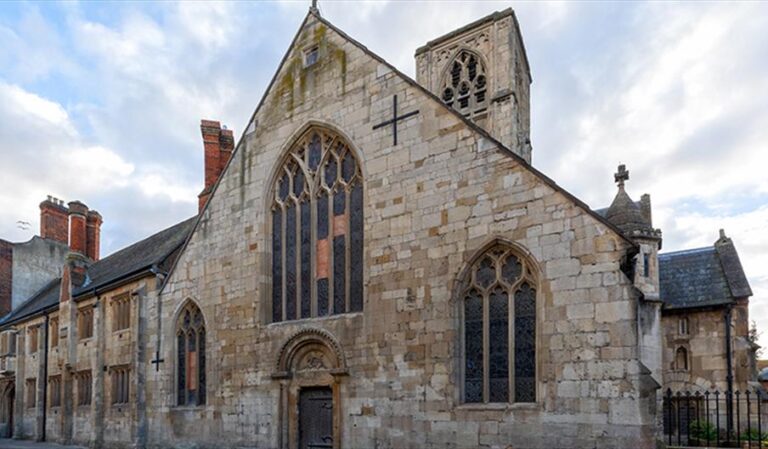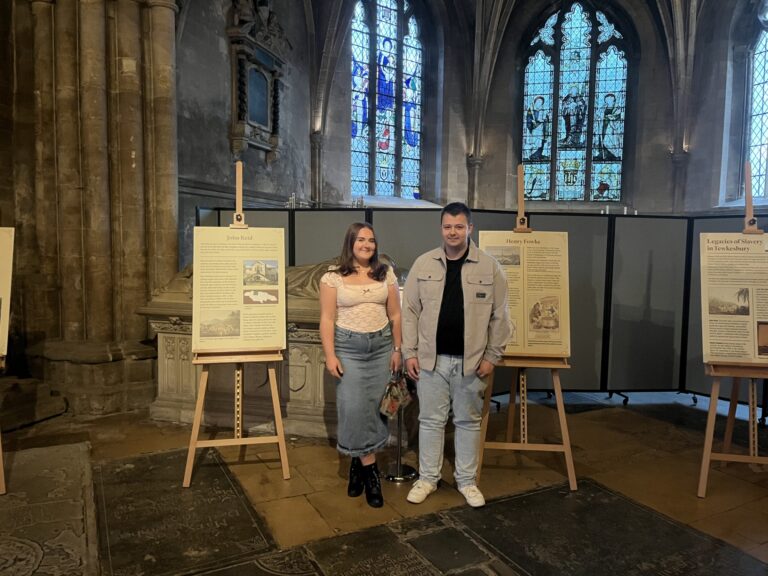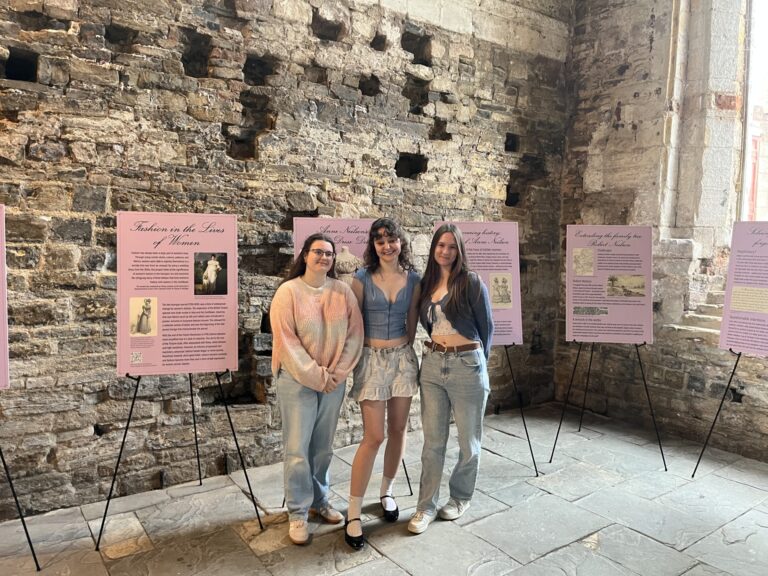| CC4HH
Legacies of slave ownership in Pittville and Cheltenham
This project was conducted by Alfie Lansdown, Sam Payne, Jack Vincent and Will Clark.
Jump to: Introduction | Abolitionists in Cheltenham and Pittville | Craven Berkeley | Slave Owners in Pittville and Cheltenham | Legacies of Slavery in Pittville and Cheltenham
Introduction
The murder of George Floyd in 2020 led to protests against racism and police brutality across the world, often in the name of the Black Lives Matter movement. In Britain, the protests also highlighted the contested nature of our colonial history, and raised significant questions about the way we discuss, remember and often forget the history of the transatlantic slave trade. As the controversial removal of Edward Colston’s statue in Bristol highlighted, there has been a growing debate over the way many public monuments celebrate problematic historical figures, while hiding the links to slavery. For many historians, this gap in historical knowledge has played a significant role in contemporary social divisions.
This project traces the legacies of slave ownership in Cheltenham. Using records from UCL’s Legacies of British Slavery database, combined with work conducted by Pittville History Works and the British Newspaper Archive, we have traced some of the money that was given to local slave-owners as compensation for the abolition of slavery in Britain in 1833.
By looking at how money from slavery came into the town, we can challenge the simplistic idea that slavery was something that only existed a long time ago and happened somewhere far away. It is hoped that a more sensitive appreciation of this history may serve to correct some of the issues caused by the lack of historical knowledge on the subject.
Campaigns for the abolition of slavery existed on both sides of the Atlantic for decades. Two key pieces of legislation brought the practice to an end in the British Empire:
1807 Abolition of the Slave Trade Act:
The trading of enslaved people was outlawed in the British Empire. British ships now confiscated vessels found trading human beings, as well as introducing fines of £100 per enslaved person on board. However, this did not abolish slavery completely and those already enslaved were not freed.
1833 Slavery Abolition Act:
25 years later the ownership of enslaved persons was made illegal, and by 1835 it was illegal across the entire British Empire. The Act emancipated all enslaved people. It also committed the government to compensating the former slave owners for the ‘loss of property. The Act remained in place until 1997 when the Human Rights Act was passed.
1837 Compensation Act:
Compensation of former slave owners started in December 1837, with payments totalling £20 million (over £17 billion today). At the time this equated to 40% of the national budget. The money was paid to over 3000 British families who were mainly absentee plantation owners, or had shares in plantations, or directly owned slaves. The debt incurred by this Act was only paid off in 2015.
1838 full freedom achieved:
On 1 August 1938 slavery was ended across all British territories.


Abolitionists in Cheltenham and Pittville
Records show that of 391 awardees from the Compensation Act in Gloucestershire, 61 were from Cheltenham, more than any other town in the county. At the same time, evidence from local newspapers shows that the town had a very active group of abolitionists who campaigned to end slavery. This sharp contrast demonstrates that Cheltenham was a local battleground for issues that involved the transatlantic world.
Cheltenham’s Anti-Slavery Association:
The Cheltenham Assembly Rooms, built in 1810 on the High Street, acted as the centre of Cheltenham’s anti-slavery movement. The rooms hosted discussions on the atrocities of slavery and petitions to end the practice globally. Their petition handed to the Earl of Shaftsbury in 1828 made national news. This led to the expansion of the group during the 1830s as they continued to gather in protest to support American abolitionists.
Guests Speakers at the Cheltenham Anti-Slavery Society:
Henry Brewster Stanton (1805-1887)

Abolitionist. American guest speaker 2 November 1840.
George Thompson (1804-1878)

Abolitionist and MP. Guest Speaker 19 July 1838.
Bowly, Cheltenham’s Abolitionist chair:
James Hinton Bowly emerged as one of the leaders of the group. The banker led the group and established connections with London society. In 1840, Bowly and his guests, Henry Stanton of New York and John Scoble drew a crowd of 1000 to the Assembly Rooms. Bowly, an active member of the local church community, invited the speakers to describe the horrors of slavery. The meeting on 2 November 1840 argued that slave holders had actually benefitted from emancipation in Britain and the rise in the price of sugar had allowed the land owners to continue to profit. Bowly connected Cheltenham to the wider movement and built the reputation of the group to ensure the voice of the passionate locals was heard.
Cheltenham Lectures:
The society attracted George Thompson, one of Britain’s leading abolitionists. Thompson praised the local Christian community for their support of abolition and their condemnation of slavery on a moral front. The Cheltenham group focused their effort on sugar imports, boycotting the product until the Duties Act ensured that the British colonies could create a profit with paid labour after abolition. Protest in support of the emancipation of all enslaved people continued in Cheltenham with locals mirroring the London group in its support of William Lloyd Garrison and the leading emancipators across the Atlantic.
What is Cheltenham’s legacy?
This large group of protestors demonstrates that although Cheltenham was home to a significant number of people with financial interests in slavery, it was also a centre for abolitionist activity. It also shows how the struggle to end the slave trade was present throughout the country.
The Role of Craven Berkeley, Cheltenham Abolitionist
Craven Berkeley was the town’s first MP, serving between 1832-47 and 1852-55. He acted as the link between the Cheltenham abolitionists and the British government by delivering the petitions signed at the Assembly Rooms to Parliament. Berkeley acted as the figurehead for the Cheltonian movement, voicing discontent with the slave trade.
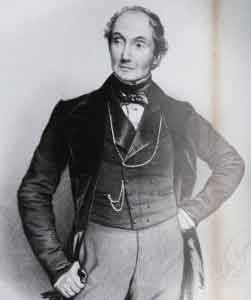
Cheltenham’s first MP:
Berkeley was from a family of aristocrats. The family lived in Gloucestershire and he lived in Cheltenham (as shown by census reports). It was not always the case the MPs lived in the areas they represented in Parliament.
He was first elected in 1832 at the height of the debate over slavery. His first significant involvement in politics came through his support of the Reform Act. He was often described as a passionate liberal who was uncompromising in his views. He supported the extension of voting rights to working people.
He petitioned Parliament on behalf of the people of Cheltenham for the immediate end to slavery.
In Parliament, he acted as the voice of the local anti-slavery society. He presented a petition drawn up by the Cheltenham society on the 30 April 1838, pushing for the total eradication of slavery across the empire.
Berkeley was an active supporter of the Abolition Act, and worked alongside other members of his family for liberal reforms.
The significance of berkeley:
Berkeley’s liberal ideas and beliefs provide an insight into the political atmosphere of Cheltenham around the time of abolition. He clearly represented the views of the majority of the local voting population. It also allows us to see that debates over the abolition of slavery must have been hotly contested considering how many Cheltonians submitted claims for compensation.
Slave owners in Pittville and Cheltenham
Of the 61 awardees of compensation in Cheltenham, we chose two people as case studies to provide an insight into the legacies of slave ownership in the area. We chose Elizabeth Hamilton as one of the few female beneficiaries in the area, and Solomon Mendes de Silva because of the amount of land and number of slaves he owned.
Elizabeth Hamilton
According to the 1851 Census, Elizabeth Hamilton was living in Cheltenham with her daughter and 4 servants at 2 Pittville Lawn (now 31 Pittville Lawn). This is a large building, and would not have been cheap to purchase or maintain.
She received compensation for two claims relating to the ownership of 100 enslaved workers in the Caribbean, originating from a plantation she inherited from her father, William Lee.
Hamilton died in 1855, leaving a large sum of money in her will, distributing this vast amount amongst many recipients. Most beneficiaries were family members, including her three nieces. Her daughter received £1200 and other assets, including paintings and jewellery.
In terms of the legacy, Elizabeth Hamilton’s daughter, Mary-Anne, left £8000 (£948,000 today) in her will. Mary-Anne died in 1871 at The Manor House, Chiswick, a mental asylum.
Solomon Mendes da Silva
Born in Jamaica, Solomon Mendes da Silva lived at Rioho Lodge, named after his plantation. After moving to Cheltenham he lived at Park Place and Blenheim Parade. During his time in Cheltenham he was an active member of the Jewish community.
He died in 1861 leaving a legacy of over £6000 (£767,000 today). Part of his will included donations to synagogues in Jamaica, London and Cheltenham. The will stipulated an amount of money to be given to Asher Asher, who became the first Jewish doctor to go through Scottish medical school. Da Silva is associated with six compensation claims for his multiple estates. Records show he was responsible for over 300 enslaved people. His biggest plantation had 300 acres of land and around 96 slaves (the number varies on different slave registers).

Cheltenham’s and Pittville’s Legacies of Slavery
One way to view the lasting legacies of slavery is to find the buildings, projects and institutions funded by the money gained by those who participated in slavery. Solomon Mendes Da Silva and Elizabeth Hamilton, both recipients of compensation for slaves lost as a result of abolition, lived within the gated community of Pittville park. They enjoyed apartments now worth over £300,000.
One of these apartments was home to Elizabeth Hamilton (1770-1855). The Compensation Act granted her £1884 (£245,544 today).
Pittville Park was home to Jamaican born Solomon Mendes Da Silva. He received one of the highest total sums of money in the Compensation Act in Cheltenham and Pittville, £6179 (£805,318 today), and as such could afford to live in the gated community.
A personal connection: John Hingston Bythewood
Bythewood was born in Dorset, England, in 1767, and was the 5th great grandfather to one of our project members. Bythewood was Captain aboard the ‘Ranger’ cargo ship in service to the East India Trading company. He did not inherit his slaves from his family, but instead he married into the slave trade, marrying Ann Bowman, nee Black, in South Carolina in 1803. He owned 27 slaves across 3 plantations and built Cassena house in Beaufort county, South Carolina. The home stands to this day.
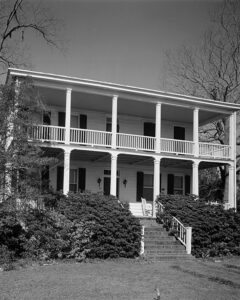
This was a surprising find for our researchers, and it once again demonstrates how legacies of slavery can be easily traced even in unknowing families today.
The legacy of slavery in Cheltenham and Pittville is one of significant contrast. The area had both a disproportionately high number of slave owners compared to its more populous neighbouring city of Gloucester, and a strong abolitionist movement. The wealth generated from slavery was spent lavishly on fine homes and given to a multitude of institutions, and yet there were many Cheltonians who went out of their way to end slavery both within the Empire and beyond.
Keeping in mind the contrasting nature of Cheltenham’s relationship with slavery, should its legacy best be remembered as one of exploitation or abolition, or both?

